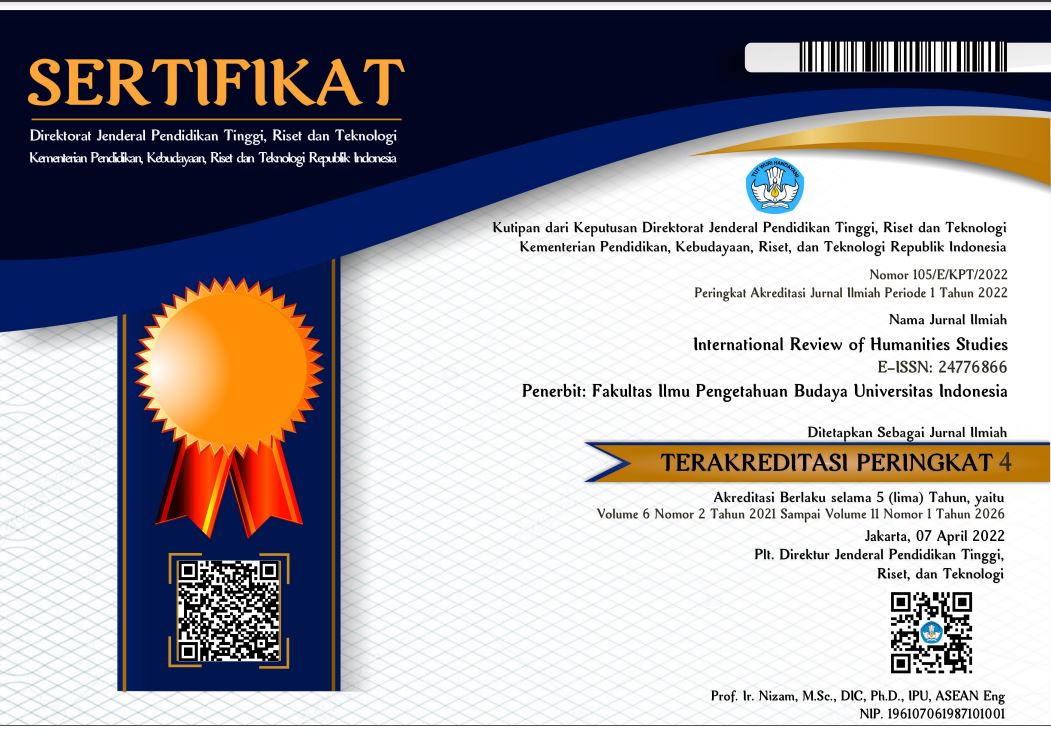International Review of Humanities Studies

Abstract
The Muludan is a tradition conducted by the Royal family in Cirebon Sultanate on the third month of the Islamic calendar (Rabi' al-awwal) to mark the celebration of the prophet Muhammad's birthday. Thousands of people from some places participate in this tradition. This paper is aimed to elaborate the cultural evolution theory (memetics) introduced by Richard Dawkings which is used to interpret the Muludan tradition as a meme. The role of the agent will be considered as a vector, not an actor. In the meantime, the Muludan can be defined not only as a religious ritual but also as a cultural tradition that has been practiced by the local people for hundred years. The tradition has a system of inheritance such as values, beliefs, behaviors, knowledge, passed down through cultural processes within the scope of the population and the environment. The conclusion is that the meaning behind the Muludan tradition believed by people, so that it develop day by day. They believe that they would gain God blessing (barakah) and Shafa‘at to practice the Muludan ritual.
References
Blackmore, Susan (1999). The Meme Machine. Oxfotd: Oxford University Press.
Dawkins, Richard. (1976). The Selfish Gene. Oxford: Oxford University Press.
El-Aswad, El-Sayed. (2004). ―Mawlid/Maulid‖. Encyclopedia of Islam and the Muslim World, second edition. USA: Macmillan. pp.710-712.
Esposito, John L (ed.) (1995). The Oxford Encyclopedia of the Modern Islamic World. New York and Oxford: Oxford University Press, pp. 79-82.
Hamdani, Deny. (2012). ―Cultural System of Cirebonese People: Tradition of Muludan in the Kanoman Kraton‖. Indonesian Journal of Social Sciences (2012), Volume 4, No. 1, January-June, pp. 11-22.
Jaelani, Aan. (2017). ―Event and Festival in Cirebon: Review of Shariah Marketing Mix‖. Cirebon: Faculty of Shariah and Islamic Economic IAIN Syekh Nurjati. 5 April 2017. http://mpra.ub.uni-munchen.de/78624/MPRA Paper Np. 78624, posted 21 April 2017
Muhaimin, A. G. (2006). The Islamic Traditions of Cirebon Ibadat and Adat among Javanese Muslims. Canberra: ANU Press.
M. Noer, Nurdin. (2012). Menusa Cerbon. Cirebon: Walatra Kadaruman,
Erman Harun. (2016). ―The Royal Mawlid Ceremonies in the Ottoman Empire (1789-1908)‖. Ankara: Department of History Ihsan Doğramaci Bilkent University. September 2016. A Master‘s Thesis.
Kaptein, Nico. (1997). Muhammad's Birthday Festival: Early History in the Central Muslim Lands and Development in the Muslim West Until the 10Th/16th Century. Leiden:EJ Brill.
___________. (1993). ―The berdiri Mawlid Issue among Indonesian Muslims in the Period from Circa 1875 to 1930‖. In: Bijdragen tot de Taal-, Land- en Volkenkunde 149 (1993), no: 1, Leiden, p.124-153. http://www.kitlv-journals.nl Katz, Marion Holmes. 2007. The Birth of the Prophet Muhammad: Devotional piety in Sunni Islam. New York:Routledge.
Popper, Karl. 2002. The Logic of Scientific Discovery. New York: Routledge. Robert, Aunger (ed.). (2000). Darwinizing Culture. The Status of Memetics as a Science. Oxford: Oxford University Press.
Reynold, Jafar. (2017). ―Why do Muslims celebrate Mawlid al-Nabawi?‖ Thu, Nov. 30, 2017. https://www.egypttoday.com/Article/1/34904/Why-do-Muslims-celebrate-Mawlid-al-Nabawi
Wildon, Edward. (2008). The Art of Memetics. California: Wes Unruh. Wijayanto, Eko. (2017). Evolutionary Perspective for Interpreting Culture. Depok. Linea Pustaka.
Yusuf, Mohamad. (2013). ―When Culture meets Religion:The Muludan Tradition in the Kanoman Sultanate, Cirebon, West Java‖. AL ALBAB - Borneo Journal of Religious Studies (BJRS) Volume 2 Number 1 June 2013 pp. 19-31.
Recommended Citation
Wijayanto, Eko and Soekarba, Siti Rohmah
(2019)
"THE CULTURAL EVOLUTION OF LOCAL ISLAMIC VALUES ON THE MULUDAN TRADITION IN CIREBON: A MEMETICS PERSPECTIVE,"
International Review of Humanities Studies: Vol. 4:
No.
2, Article 2.
Available at:
https://scholarhub.ui.ac.id/irhs/vol4/iss2/2
Included in
Arts and Humanities Commons, Life Sciences Commons, Social and Behavioral Sciences Commons


